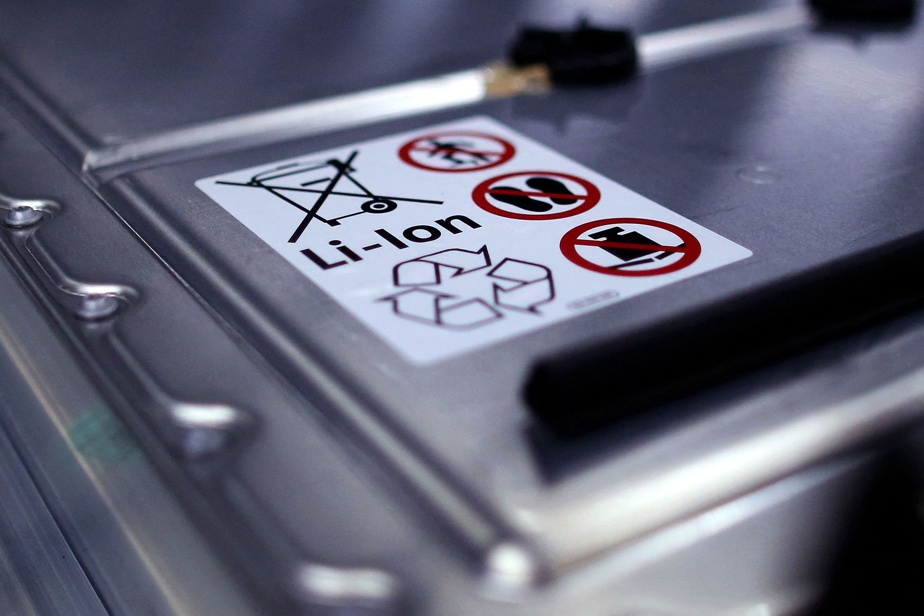“The materials currently used in batteries are mainly metals. They must be extracted, purified, transformed. These methods set economic and environmental limits,” explains Dominic Rochefort, professor in the chemistry department at the University of Montreal.
To limit the environmental impact of batteries, the researcher names three possible solutions: recycling, extraction by using renewable energies and the creation of batteries using biomass.
These solutions are at the origin of different policies at the international level. At the top of the list of greening actors, Europe. Further down the peloton, Canada.
European change

PHOTO ARCHIVE REUTERS
Production of copper foil for lithium batteries in Tongling, China
To facilitate the “greening of batteries”, the European Union (in agreement with its Member States) bet in December on the implementation of a circular policy. The EU relies in particular on information to highlight the lifespan of batteries as well as their carbon footprint. This footprint will be calculated over the entire “life of the battery”, from the extraction of its components to recycling, and will give rise to a limit from 2027. Another measure: companies will have to actively participate in the collection of batteries from their products to facilitate their recycling.
In addition to promoting greener production, this policy should make European industry more competitive, which is targeting 25% of global production in 2030 compared to 3% in 2020, according to Agence France-Presse.
This market is more developed in Canada. The country is the second-largest battery producer, behind China, according to research firm BloombergNEF. A possible balance thanks to the presence of many minerals on the territory: graphite, nickel, aluminum, copper, lithium…
Green extraction in Canada?
In addition to having the right materials, Canada – and more specifically Quebec – has enough energy to enable their extraction. “For greening, we can also ensure that the energy used during extraction, transformation, throughout the process, is renewable. Quebec is well placed for this, because the electricity used is of renewable origin,” emphasizes Dominic Rochefort. The 94% of energy produced by hydropower plants – according to the Government of Quebec – would already make it possible to green battery production.
But is there a Canadian policy similar to that in Europe?

PHOTO SEAN KILPATRICK, THE CANADIAN PRESS
Sorting rechargeable lithium batteries at Li-Cycle in Kingston, Ontario
Last November, during the Québec Mines + Energy Congress, Recyc-Québec unveiled its study on the greening of batteries. The organization says it wants to support the development of technical centers and training aimed at better understanding batteries, their operation and maintenance. This policy also involves “the establishment of a complete sector for the manufacture, recovery and recycling of batteries in Quebec in order to promote the circular economy”.
Despite its place in the market, Canada does not have a federal battery policy. “There is probably a lack of alignment between the provinces to define, as in Europe, realistic thresholds for the greening of batteries in Canada”, notes Mickaël Dollé, professor of the Laboratory of chemistry and electrochemistry of solids at the University of Montreal.
Biomass battery
Another problem remains: minerals are in limited supply. If the recycling of used components partially solves this problem, the research of the team from the University of Montreal – professors Hélène Lebel, James Wuest and Dominic Rochefort – focuses on a more sustainable solution, namely the creation of batteries using the biomass. “Our objective is to develop active materials which are organic, that is to say which are molecules produced on the earth’s crust”, explains Dominic Rochefort.
“Batteries using primarily biomass are still in the development stage in research laboratories, but there are also some start-ups that were created around this project, notes Mickaël Dollé. These batteries will not target the same markets as current batteries. They do not have the same performance and will therefore affect different applications. »
Asked about this, Recyc-Québec announced that it wanted to create an REP, a sector with extended producer responsibility, to support initiatives of this kind. “This would promote eco-design and the funding of research and development of reuse and recycling channels”, explains his communications advisor. These initiatives are still at the planning stage.
Learn more
-
- 45%
- In Europe, the take-back rate of portable batteries by companies that include them in their products should reach 45% of the total by 2023, and up to 73% by 2030.
AFP
- 51%
- For bicycle and scooter batteries, the minimum collection rate will be 51% by 2028 in the European Union.
AFP
